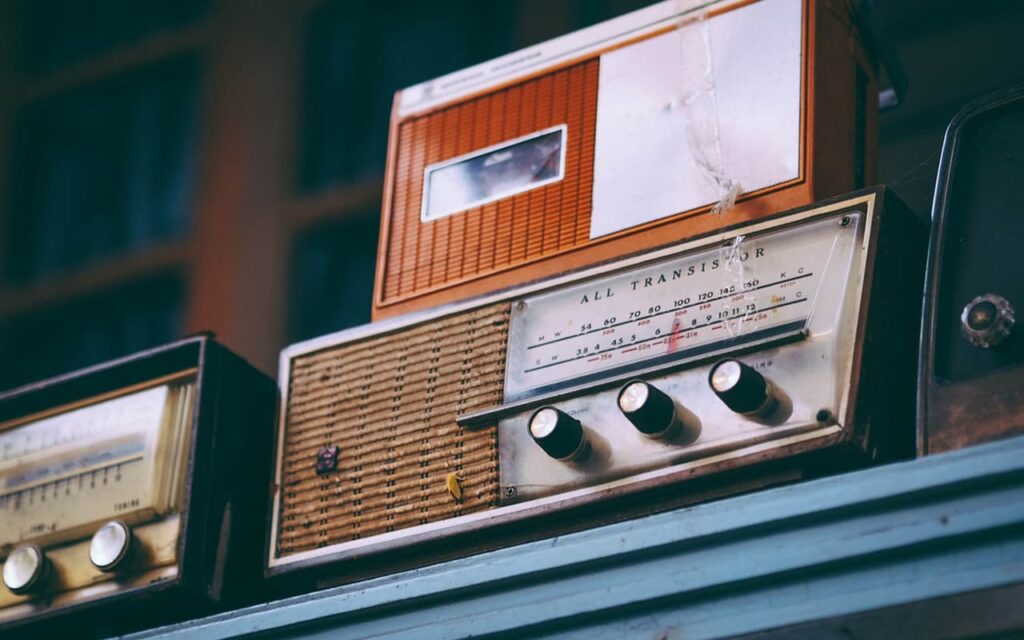In January 1922, the government lowered the barrier for individuals interested only in receiving broadcasts by introducing a new category of license, the private receiving station, which eliminated the need for an amateur radio license. Receiving station licenses initially cost $1 and had to be renewed annually. They were issued by the Department of Marine and Fisheries in Ottawa, the department’s radio inspectors, and postmasters located in major cities, with a license period that coincided with April 1 to March 31 of the fiscal year. As of March 31, 1923, there were a total of 9996 licenses for private receiving stations. The license fee subsequently increased to $2.50 per year to provide a profit for both radio and television broadcasts of the Canadian Broadcasting Corporation, but was abolished on April 1, 1953.
In 1922, two new categories of broadcasting were added to the regulation: “Private Commercial Radio Station” and “Amateur Radio Station”. The annual license fee for these stations was set on June 30, 1922 at $50 for commercial stations and $5 for amateur stations. As of March 31, 1923, there were 57 commercial and 8 amateur authorized stations.
In late April 1922, an initial group of twenty-three commercial radio broadcasting licenses were announced, which were assigned four-letter call signs beginning with “CF,” “CH,” “CJ,” or “CK,” and one additional “C” as the third or fourth letter. These stations were assigned to a band of six wavelengths in 10-meter increments from 400 to 450 meters (750-667 kHz). Commercial broadcasting stations initially operated under the restriction that “no charge shall be made for any service provided by stations of this class.” In 1924, this provision was relaxed to allow “the lease of broadcasting stations for advertising purposes” upon obtaining “the written consent of the Minister”. However, “direct advertising” was prohibited from 18:30 to 23:00 (“direct advertising” was generally defined as regular advertising messages, as opposed to “indirect advertising” which consisted of more general sponsorship announcements).
Amateur broadcasting stations were given alphanumeric call signs starting with the number “10” and were originally intended to transmit on 250 meters (1200 kHz). These stations were issued to individual amateur associations and were prohibited from advertising. Most were expected to be established in communities where there were no commercial stations. Only a small number of amateur broadcasting stations were authorized, and most of them were eventually converted to commercial operations.
Initially, the station’s audience consisted mostly of young men fiddling with crystal sets, which required the use of headphones to allow only one person to listen at a time. In 1925, Edward Rogers invented the radio tube using alternating current (AC) electricity, which immediately became the global standard for much more powerful and easier-to-use radios. He created the Rogers Majestic Company to manufacture the receivers and established several broadcasting stations, including the experimental station 9RB (later CFRB, Toronto). By the late 1920s, easy-to-use radios with loudspeakers were widely available, albeit somewhat expensive, opening up a much wider audience, attracting the middle class who could afford them as well as restaurants, clubs, and taverns that wanted to attract customers. Even remote towns and localities could listen.
Radio signals in the AM band travel long distances at night, and Canada soon found that it had few open frequencies due to the existence of its much larger American neighbor. In a major reallocation of U.S. stations on November 11, 1928, six frequencies were unofficially allocated exclusively for Canadian use, but the country complained that this was not enough. In 1941, the implementation of the North American Regional Broadcasting Agreement gave Canada some additional exclusive assignments, and the development of the FM band eventually eased the restrictions on the number of available broadcast slots.
